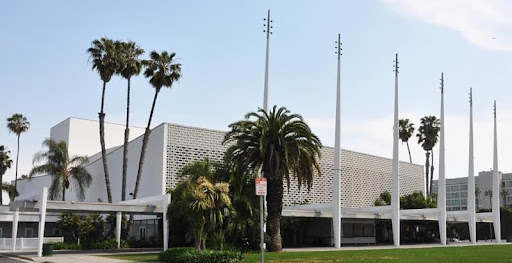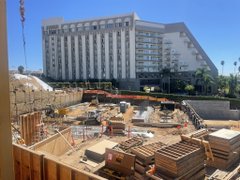
What were they thinking? On Wednesday morning at 12:30 am on October 15th, we were blindsided when the Council voted four (Jesse, Caroline, Dan, Natalya) to three (Lana, Barry, Ellis) not to extend RPG’s exclusive negotiating agreement (ENA) to restore the historic and nationally registered Civic Auditorium. RPG (Revitalization Partners Group) is a consortium of some of the largest music operators in the nation. The majority felt RPG had not done enough to produce transparent “real” numbers (eg, a complete financial analysis and business plan). The new City manager, Oliver Chi, then slipped into that vacuum by having his own staff prepare their own plan with alternatives that allegedly showed that no scenario was profitable in a 25-year window. Beth Collins, RPG’s representative (who only had three minutes to speak) came to the Council meeting and showed RPG’s video, but did not have time to publicly minutely challenge the staff’s hasty numbers. Feasibility studies are notoriously malleable given all the variables: starting assumptions, guessed growth factors, alternative scenarios, predicted future construction costs, taxes, depreciation, tax credits, profit needs, etc, etc. It seems odd that staff can prepare in a week or two a more credible restoration profitability plan than the company that has been doing it for decades?
The minority of the Council wanted to extend the ENA for just three months, but the majority felt that that would be just “kicking the can down the road”. The majority then prevailed upon the City to:
1. Prepare two feasibility plans for the whole site (including the auditorium, the playing field, the pre-school, the subterranean stormwater facility, and the judges’ parking lot/charging station). One plan would keep the auditorium, another would scrape the whole site and ELIMINATE the auditorium, which councilman Zwick described as an “encumbrance”. There was a claim made that the land was worth only $19M with the auditorium but $100M without.
2. During the time these 2 plans are being prepared, it would not keep the City from continuing to negotiate with RPG if they wanted back in, which we hope they will consider.
3. Upon completion of the 2 plans, they could be presumably fashioned into new RFPs for new parties interested in development.
The majority position doesn’t just kick the can down the road; it actually kicks it back about ten years. In the mid-teens, there was a long process of envisioning the entire south corner of the Civic Center area. Public hearings involving dozens of stakeholders, called the Civic Center Working Group, were held with competing testimony from hundreds of residents, students, etc They concluded that the vast majority wanted the auditorium to remain, with the playing field added. Although they were pressured to provide other alternatives (housing, mixed use, and hotels), they settled on the Civic Center uses that we see there today. The Council now wants to start the whole re-envisioning process all over again. In the Council majority’s opinion, there was not enough time to spare 3 months to close the deal in front of them, but there’s plenty of time to reinvent the wheel.
This is the fourth Auditorium restoration suitor (previously redevelopment funds, Niederlander, and SMMUSD) that has evaporated in the last twelve years since the auditorium was closed. While previous ones failed for a variety of reasons, this is the first one that the City has unceremoniously fired. This is the bird in the hand that our Council let it go. RPG was hoping to see a unified council signaling they were fully supporting the project extension before RPG spent another million dollars in project development costs. Instead, they got a divided council with the majority chasing a mirage that the grass is greener somewhere else. RPG is not likely to fly back into our hands without solid support from a unified City Council. Such support is unfortunately highly unlikely, but we hope to be pleasantly surprised. But this denial also poisons the process for any other interested parties that may consider making a future restoration offer to such a fickle City Council.
And fickle is the right word here, because popular sentiment was clearly in favor of continuing for another 6 months the ENA with RPG. The downside of a time extension were incredibly small. If RPG’s eventual financial plan didn’t work, then we would know that a new way of moving forward would be needed. However, deciding a priori that it won’t work is a serious mistake and possibly snatches defeat from the jaws of victory. Over 300 letters were written in support, some 30+ people spoke in support at the Council meeting, with only two speaking against. Many more people would have shown up, but most people considered approving the time extension by the City Council a no-brainer. Everyone knows these types of mega deals are always time-consuming. The Council majority clearly ignored this massive public support, and they don’t care about the clear wishes of their constituents. The majority of the Council is not serving the City’s residents’ explicit wishes and is pursuing some other agenda.
Given the surprising outcome Wednesday morning, eg, a broke City somehow mysteriously turns down a free $300-$400M development offer that would not cost the City a penny(!), there are naturally many rumors swirling. The validity of those rumors is unknown because there are simply too many places where participants may have differing interpretations. We don’t know, and may never know about why over half the City Council can’t meet the public’s simple and clear request to restore the Civic Auditorium,
Fundamentally, the only thing that was on the table that morning was time. Just 3 months. But it quickly turned into a battle royale. Some Council members signaling support for preservation and RPG, while others trashed RPG, menaced the auditorium, and served up instead a warmed-over process from 10 years ago. The Council majority knew or should have known that by dumping RPG, they were dooming or hoping to doom or helping to doom the Auditorium. Who will want to offer a similar gift to a broke City, after it turned down the generous offer from RPG, one of the largest operators in the music business?
This is a serious and possibly irreversible error by the Council majority. The last time a Council made such a gigantic unforced error was in 1973 when they voted to tear down another iconic landmark, the Santa Monica Pier. That vote was subsequently reversed, and the pro-demolition council members were all voted out of office. That allegedly useless Pier is still serving us today.
The City, with this unexplainable decision, has taken a huge public hit to our finances, our future, and our reputation. We will pay for this such grievous and notorious error for years, much longer than the three months that were under consideration.
But for us, the job of preserving the auditorium just got a lot harder. However, citizens can still have a positive impact. Remember that it was the community group, Save the Civic, that found RPG and brought them in, and they nearly succeeded where 3 others failed. We hope RPG will persevere, as they have the full support of the citizens.
Now is the time for us to finish the job the Council failed to do.
By Mario Fonda-Bonardi AIA
S.M.a.r.t. Santa Monica Architects for a Responsible Tomorrow
Mario Fonda-Bonardi AIA, former Planning Commissioner, Robert H. Taylor AIA, Architect, Dan Jansenson, former Building and Life Safety Commissioner, Samuel Tolkin, Architect, former Planning Commissioner, Michael Jolly, AIR-CRE, Jack Hillbrand AIA, Landmarks Commission Architect, Phil Brock, former SM Mayor (Ret).
For previous articles, see www.santamonicaarch.wordpress.com/writing













